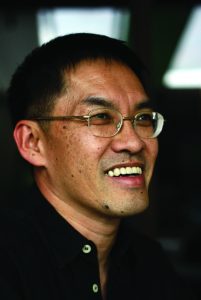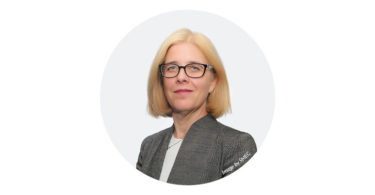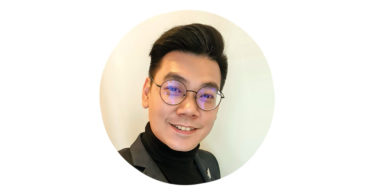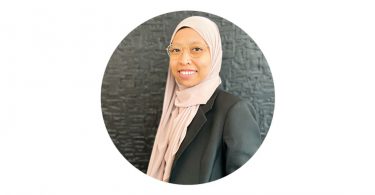Ng Wai Keong is the principal director of NWKA Architects Sdn Bhd, an award-winning architecture studio. He has experience in designing and creating boutique homes, niche projects and corporate architecture works.
After graduating from the Welsh School of Architecture in the 1980s, Ng began his practice in England with the SW Thames Regional Health Authority. He participated in corporate architecture projects such as the Merrill Lynch European office projects in the City of London and the Kleinwort Benson Bank during his time with Covell Matthews Wheatley Architects Ltd.
He returned from London in 1987 and formed ACASYS Group—a progressive architectural group—with his partners and together they completed projects such as Proton Centre of Excellence, Tractors Malaysia Berhad Headquarters and Nilai Medical Centre. The company established a firm presence in the marketplace by culminating a series of significant architectural accomplishments.
NWK Chartered Architect was established in 1991 to undertake Ng’s passion for experimental design-orientated projects, which served as a test bed for creativity and ideas. He made a career change in 2006 to redevelop the company into a boutique architectural design house called NWKA Architects Sdn Bhd, which focuses on conceptualising his idea of Success is By Design Philosophy. Now, he plans to accelerate his pursuit to reach the next level of excellence by working on niche projects and believes that success is a process of design excellence.
Tell us about your guiding approach to design and in managing clients’ expectations as the principal director in NWKA?
In our studio, design is a fun and chaotic process where we explore a range of unfettered ideas and thoughts. We always set ourselves up to start any project with a blank slate, so that we can accept and understand what the objectives are. We challenge the questions and look for an edge to see if we can come up with ideas that set us apart from others. We would have arrived at a solution when the idea possesses a greater answer than the question itself. There are five key conceptual goals in our design quality:
• It seeks to produce results where quality outweighs the value of all the physical parts put together
• It is environmentally responsive without technological reliance and is not geared toward self-gratification
• It embodies an openness for spaces to flow through during the process of creating and moulding the form
• It is a spiritual experience rather than a physical one, as it invigorates a sense of the dynamics of human energy
• It has personality, identity, memorability and distinguishability
Managing client expectations is a struggle. We set the direction, pace and expectations whenever we take on a project to make sure that our clients are on the same page in terms of objectives. We are successful when a client recognises our edge, subscribes to our philosophy and believes in working with us.
Could you give an example of a successful project that you have led from inception to completion?
Taylor’s Lakeside Campus stands out as a project in which we have achieved so much with so little. It was an ambitious, revolutionary and forward-thinking project with risks and limited funding. We were patient, meticulous and focused in managing the available resources. The response was overwhelming and a testimony to our architectural approach in designing a student-centred campus, against the norm of an institution-centric campus. Today, it is still a concept many struggle to appreciate. Student intake almost doubled and the industry stopped momentarily to take stock of the impact. It was a game changer.
What do you think is a major strength of your design studio and how have you personally contributed towards its success?
Architects are tasked with creating ideas and turning them into reality in a built environment. An architect needs to not only produce a great idea, but also build it. The creative process is free-will, uninhibited and disorderly, but the production process is systematic and rational. Architectural design studios are generally creative but disorganised and chaotic. The challenge is to bring the diametrics to work together cohesively.
In our creative studios, architects are trained to manage constantly changing project requirements, adhering to limited resources, time, costs and attention. The directors develop a resource management programme that was replicated from other service-based industries and provided a tool to train and condition architects on resource control, which helps them in the timely delivery of design products and documentation.
Clients’ confidence and trust in utilising our programming as a benchmark of on-time deliveries are a testimony to the quality of our product delivery system. The management foundations provide a platform that is systematic and well-oiled to support a young and spirited team.
The structured product development process with the two tenets of design creativity and delivery is our underlying strength in realising great design ideas.
 Could you give an example of a creative and practical design concept that you have conceived and delivered?
Could you give an example of a creative and practical design concept that you have conceived and delivered?
In Taylor’s International School Puchong, we created a campus that celebrates learning, where we provide an environment for a child’s mind to explore possibilities. Its open campus is designed to stimulate and redefine the concept of learning as a continuous process that can occur in every physical space. It is seamless and not confined to the classrooms, as it seeks to remove any physical impediment to the learning process. The openness is more apparent and contrasting when compared to traditional school buildings that are dictated by compartmentalised and institutionalised learning in classrooms. In this campus, caring for the environment is not just a subject but a way of life. Green walls are used as shades for the classrooms, while students learn to play under tree canopies. It is designed for learning, living and playing to be a natural progression that complements one another. The architectural design seeks to integrate the learning environment, as it uses the form, function and colours to stimulate the mind. By challenging convention, the design sets the stage for educators to develop critical thinkers who have an affinity for the world around them.
Could you highlight an instance where a climate-responsive design was implemented and how sustainable design principles were incorporated for a project in Malaysia?
Climate-responsiveness is a fundamental trait in our approach to good design. However, it is not necessarily so as many people do not see monetary value in Green. Our responsibility in looking after our planet starts with educating our children about caring for the environment as a way of life and not just a subject in the school curriculum. The journey of climatic response should begin in schools, which are used as building blocks for climatic-responsive living spaces that are integral to a child’s life, rather than an abstract notion or afterthought that is learnt in the classrooms.
There are six key aspects that incorporate sustainable design principles in Malaysia:
• Maintain a simple environmental design to minimise costs and maximise impact
• Minimise exposure and orientation of the built form to reduce heat gain
• Simple Green surfaces over grey exposed concrete can eliminate heat build-up and increase oxygen levels in the area significantly
• Cross ventilation can refresh and increase internal comfort levels
• Natural light penetration deep into the built form can enhance the ambience and reduce reliance on energy
• Water harvesting can assist in meeting the demand for processed water
 What do you think are the major challenges faced in managing the studio and by the building industry in Malaysia in general?
What do you think are the major challenges faced in managing the studio and by the building industry in Malaysia in general?
Back in the 1970s, my mathematics teacher used to tell us off for having eyes that do not see. In our society, people do not see bicycles that are going in the wrong direction, pavements that go nowhere, dirty rivers, queue jumpers, blatant corruption, and so on. The same collective blindness also prevails in the construction industry, where there are contractors who are unable to see uneven plastering, technical staff who are not detail-oriented and construction workers who are treated as less than human. Our studios and nation face the same dire need for a responsive intelligent workforce. Even with the best systems, we will fail in our desire to become a progressive and developed civil society if people maintain this dull and blinded attitude.
What are the main objectives that you try to meet in every design?
Notwithstanding our design philosophy, we strive to bring freshness, delight and surprise into every new project. At the same time, we consistently build on the experience of our previous projects to push our own boundaries and limitations to yield creative results. This design process allows us to evolve rather than revolve in the development of new ideas.
What principles are fundamental to your work ethos and culture?
Architecture is not only a job or work, it is also a desire to create an art piece in a three-dimensional habitable environment, which can transcend time or working hours that may govern when ideas and concepts come alive. On the other hand, I do not advocate overworking. I seek to complete work within official working hours because relentless overtime and offices that do not stop work for no reason do not appeal to me, as it suggests poor management and low productivity. We place priority on keeping an alert mind driven by objectives, as opposed to investing time just to get things done. Architecture becomes a business over passion when it gets too big and impersonal after you stop enjoying it.
 What are some of the major accolades you have won and how have they motivated you?
What are some of the major accolades you have won and how have they motivated you?
We have been blessed to receive accolades such as the PAM Gold Medal Award, International Real Estate Federation (FIABCI) Malaysia Property Award and BCI Top 10 Awards on a yearly basis since our inception. It is heart-warming that our works are appreciated and recognised as contribution to the world of architecture. The recognition gives us an opportunity to tell our story and we are able to reach a wider audience. However, it is the stories of our clients that need to be told, which makes our architecture works more gratifying as they bring meaningfulness to their lives.
What are your upcoming plans for 2017?
The first quarter of 2016 was uncertain as most of our works were near completion and the economic outlook was doubtful. Since then, we have experienced resurgence in the direction of work, with public housing needs and transportation hubs driving the next stage of urban development. It is an exciting phase of our cities’ development when we begin to integrate public needs, which has never happened before when so much of our resources were focused on private rather than public transport infrastructure projects.

 Hong Kong
Hong Kong Singapore
Singapore Indonesia
Indonesia Tiếng Việt
Tiếng Việt ประเทศไทย
ประเทศไทย










